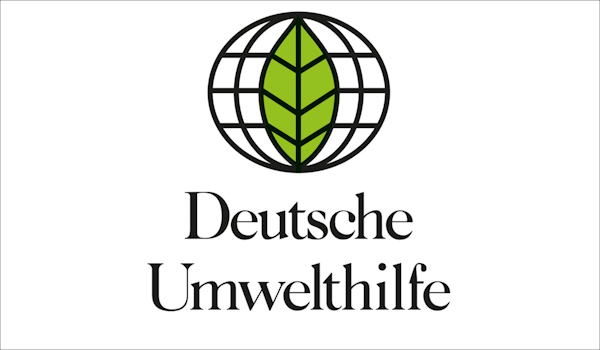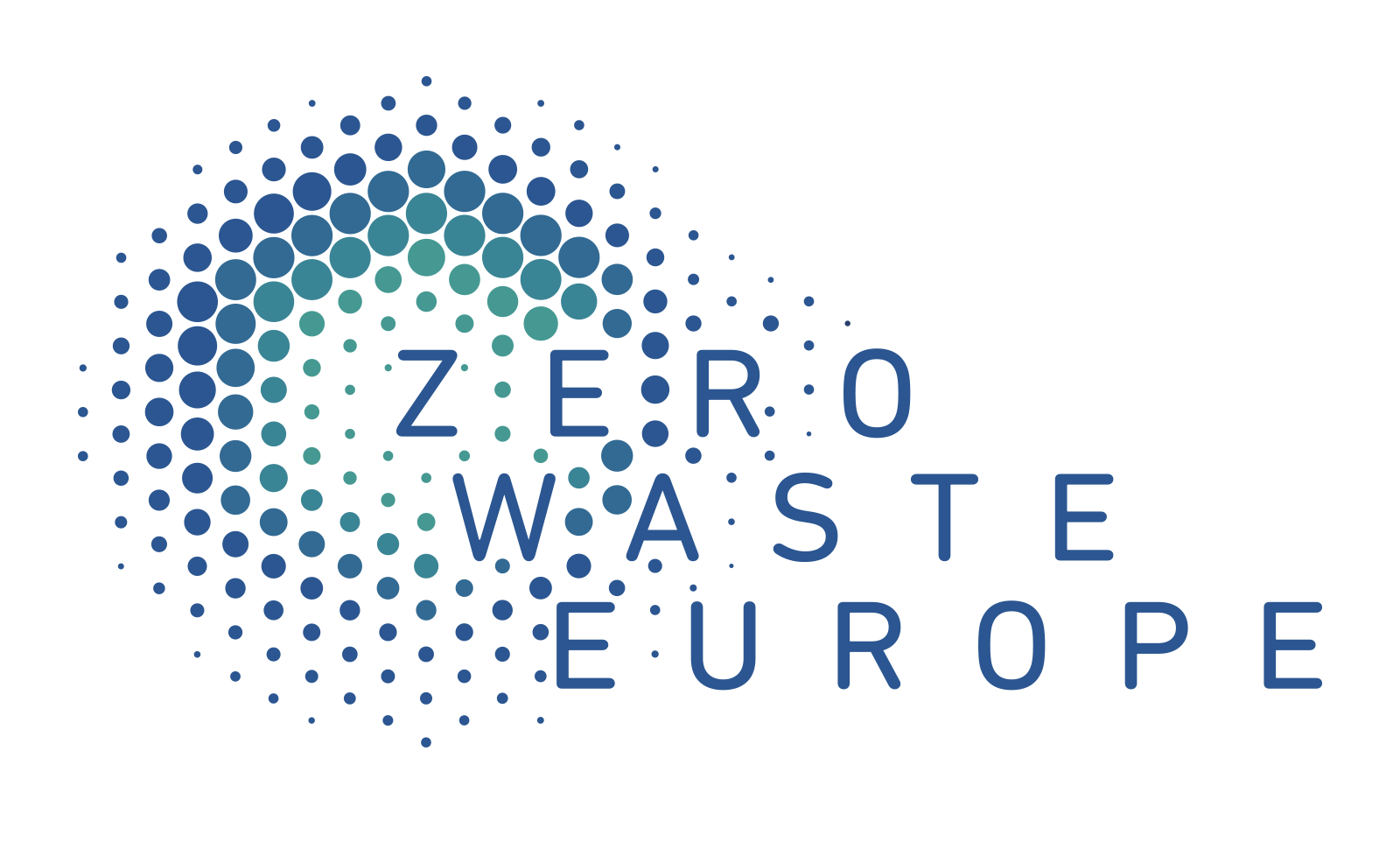Prevention and reuse – the only solution to record levels of packaging waste
Levels of packaging waste in Europe are at an all-time high. Over the last decade, its growth outpaced the economy, rising faster than the volume of traded goods.
The latest Eurostat data on packaging waste, published in October 2023, reaffirms this upward trajectory with a new record of 188.7 kg per capita in 2021 – a 6% increase in waste generation in only one year. The same data also reveals that recycling rates have stagnated since 2010. The packaging sector is now responsible for approximately 59 million tonnes in CO2eq, more than the annual emissions of Hungary. Packaging is also a major driver of virgin resources exploitation – using 40% of plastic and 50% of paper in Europe.
Without action, the EU would see a further 19% increase in packaging waste by 2030. This
reality is incompatible with Europe’s ambitions for climate neutrality and resource efficiency.
The Commission proposal for a packaging and packaging waste regulation (PPWR) responds
directly to this challenge with the goals to:
- Prevent the generation of unnecessary packaging waste: reduce it in quantity, restrict
overpackaging and promote reusable packaging solutions; - Make all packaging on the EU market recyclable by 2030;
- Reduce the need for primary natural resource use and create a well-functioning market for
secondary raw materials (notably plastics).
In this regard, the PPWR offers a necessary pathway to reverse the trend of an ever more
material and carbon intensive packaging sector, while creating real economic opportunities for
truly circular businesses.
In light of the latest official data cited above, opposition to a more pragmatic and systemic
approach to reducing Europe’s dependency on single-use packaging looks increasingly
difficult to defend. However, the PPWR proposal has been one of the most intensely lobbied
files of this political term. Policy makers across institutions have complained about an endless
influx of requests, untransparent studies and increasingly aggressive lobbying strategies. The
attempts to undermine key waste prevention measures of the regulation were, regrettably, not
accompanied by any credible alternatives to tackle the growth of packaging waste.
As a result of this intense negative lobbying, the Parliament’s responsible committees diluted
the ambition of the proposal introducing several exemptions which undermine the Regulation’s
chances to stop the uncontrolled growth of packaging waste.
In November, all members of the European Parliament will choose either to provide a
credible solution to the packaging waste crisis by supporting reuse targets (art. 26) and
tackling unnecessary packaging (art.22 & Annex V), or they will surrender to the
aggressive lobbying of the single-use packaging industry.
FAQ to sort through the trash talk
1) Was the Commission proposal for a packaging regulation too ambitious?
The reduction of packaging waste proposed by the Commission is very modest when compared
with the more than 20% increase in packaging volumes over the last decade. A 5% reduction of
packaging waste by 2030 should also be put in the context of the European climate target to
reduce emissions by 55% by 2030 – which major industrial actors in the packaging sector are
not on track to meet.
The proposal was not disproportionate or excessive: even if all the waste prevention and reuse
measures contained in the draft regulation were to be fully applied, this would still be insufficient
to achieve a 5% reduction of packaging waste generation by 2030. Hence, the regulation
clarifies that Member States will have to take additional measures to meet their waste
prevention targets. The position of the Parliament ENVI Committee further widened this gap by
introducing several loopholes and exemptions on reuse targets and restrictions for unnecessary
packaging, thus undermining the EU chances to stop the growth of packaging waste in a
harmonised way.
2) Do we really need to focus on waste prevention? Can’t recycling be enough?
Recycling – on its own – will not reduce waste levels and is insufficient to reduce Europe’s
material and carbon footprints at the speed and scale needed to achieve our climate and
environmental goals. Also simply substituting one single-use material for another is not a
genuine solution to the waste crisis.
The rate of packaging waste recycling in the EU has essentially stagnated since 2010. This is
despite many industry initiatives and policies focused on recycling. In other words, any
improvements in recycling have struggled to keep up with growing levels of waste. The EU must
resist the temptation to continue business as usual focusing only on marginal improvements in
waste management as this approach has already proven to be insufficient. Instead, Europe
must develop a comprehensive approach to circular packaging which, alongside ensuring all
packaging is recyclable, prevents the generation of unnecessary waste and scales up reuse.
3) Why don’t we just shift from plastics to single-use paper, it’s green, renewable, recyclable?
Some of the largest polluters in the packaging value chain, led by single-use paper producers
and McDonald’s, conducted a massive lobbying campaign to greenwash throwaway paper as
a sustainable alternative to single-use plastics and reuse. New research proved this is a false
solution:
Paper packaging is already the largest packaging waste stream in Europe. With 34 million
tonnes of waste generated in 2021, paper alone makes up for more trash than the two next
largest waste material streams, plastic and glass, combined.
- Paper packaging is already the largest packaging waste stream in Europe. With 34 million tonnes of waste generated in 2021, paper alone makes up for more trash than the two next largest waste material streams, plastic and glass, combined.
- Paper packaging used in the HORECA sector is particularly problematic as it is usually
combined with plastic or chemical coatings, it rarely includes recycled content or is
successfully recycled into new packaging. - The raw materials for paper packaging are increasingly imported from developing countries,
contributing to global deforestation and water stress. On average, three billion trees are cut
each year for global paper packaging.
To genuinely prevent waste, the EU must adopt effective rules to address the uncontrolled
growth of single-use packaging, no matter the material it is made of.
4) What is the problem with the current rules of the Packaging & Packaging Waste Directive?
One of the major limitations of the current Directive, and a primary motivation for its revision,
was that it was too vague and unenforceable. As a result, it failed to prevent even the worst
cases of overpackaging, e.g. apples in shrink film and polystyrene trays or excessive empty
space in online deliveries. There is now a risk of repeating the same mistake by introducing
unnecessary derogations, exemptions and loopholes leading to regulatory uncertainty and
undermining the regulation’s practical effectiveness in the Single Market.
The original PPWR proposal already contained many unnecessary derogations and
exemptions. Instead of closing these gaps, this situation was worsened by the position adopted
by the Environment Committee which widened loopholes on key waste prevention measures.
The sweeping and broadly defined derogations introduced, e.g. on art. 26 on reuse (2040
targets not binding anymore) and art. 22 & Annex V on unnecessary packaging (broad
unjustified exemption for paper) undermine their practical implementation and enforcement.
Instead of a patchwork of loopholes to meet lobbying requests, the European Parliament must
deliver a harmonised set of rules that can be practically implemented and enforced to reduce
waste, restrict unnecessary packaging and promote reusable solutions.
5) What has been the impact of the unprecedented lobbying from the throw-away packaging industry?
The packaging regulation has been one of the most intensely lobbied files of this political term.
Policy makers faced an endless influx of untransparent studies and increasingly aggressive
lobbying strategies. This is confirmed by the analysis from InfluenceMap showing significant
opposition from industry groups which is putting the EU’s efforts to address packaging waste at
risk.
Since the publication of the proposal, several misleading and unsubstantiated lobbying
arguments have managed to divert attention. This included overinflated fears about the impacts
on hygiene, food waste and existing recycling infrastructures as well as untransparent studies
claiming that single-use packaging would have a better environmental performance than reuse
systems.
Despite having been widely debunked by NGOs, scientists and the Commission, these false
arguments have successfully influenced the positions of the Parliament Industry and
Agriculture committees. The pushback from laggards in the packaging industry, has not only
distracted from the useful discussions on how to improve the proposal, but it also succeeded to
water it down. While all available independent evidence supports more action on waste
prevention, the compromises voted in ENVI Committee show an overall reduction on the level of
ambition. As things stand, the European Parliament is poised to significantly lower the ambition
of this regulation compared to the original proposal, the opposite of the constructive role that
MEPs have played in other Green Deal files.
6) Is reuse really better than single use? What about industry-funded LCAs?
In line with the waste hierarchy, extensive independent scientific literature, illustrates the potential
of reusable packaging systems compared to single use. Well-designed reuse systems can reduce
waste at source, cut energy, emissions, resource and water use, and create jobs and business
opportunities. Evidently these systems must be well-managed and meet a minimum number of
rotations through efficient collection, washing and redistribution to maximise their environmental
potential.
Decision-makers should base their decisions on peer-reviewed and independent evidence rather
than on biased studies sponsored by vested interests in order to sow doubt and maintain the
status quo. Regrettably, life cycle assessments commissioned by single use packaging producers
have misled policy makers. These studies have been found to exhibit a clear bias using cherrypicked scenarios, a worrying lack of transparency and unfavorable assumptions against reuse
(return rates, washing and dedicated return journeys). 58 experts in life cycle assessment have
urged caution around using packaging industry-funded LCAs to make general conclusions in the
sector, pointing to their lack of transparency or flawed assumptions.
In the meantime, new evidence has emerged which bolsters the Commission’s proposals on
waste prevention and reuse, in particular for the food and beverages sector. Preliminary
results from the Joint Research Centre, show predominantly favourable results for reuse systems
compared to their single use packaging equivalents.
7) What about the socio-economic impacts of the regulation?
The measures included in the PPWR are expected to create 29,000 new green jobs and
generate savings for consumers of around 100EUR per year by 2030. New rules ensuring all
packaging is recyclable will increase the value of waste and thus improve the viability of the
recycling sector. Recycled content targets will also create certainty for investors. In parallel,
scaling up reusable packaging will depend on local job creation and new businesses
throughout Europe to manage reverse logistics and pooling infrastructure.
In contrast, although single-use packaging production (for example for take-away) experienced
rapid growth in recent years, this has rarely resulted in job creation due to high levels of
automation and consolidation in packaging manufacturing. Growing material prices (up 23% in
two years) will also make reuse increasingly economic. Furthermore, market pressures have
seen a growing share of raw materials (such as paper pulp from Brazil) or finished single-use
packaging (such as finished packaging from China) being imported from outside the EU.
Banning the worst cases of deceptive over-packaging practices, such as false bottoms or
double walls, will also prevent citizens from being misled by unfair practices.
8) Is reusable packaging unhygienic? Is all packaging safe?
It’s important that all packaging is clean and hygienic: this is not dependent on whether the
packaging is single use or reusable. Safe reusable food packaging systems have been
operating at scale across Europe without incident for decades. Each time we eat from a
ceramic plate in a restaurant we also participate in a reuse system. In the case of refill – where
citizens bring their own packaging – the proposal also allows companies to reject dirty
packaging and the ENVI report removes their liability.
Missing from this debate, however, are concerns around chemical safety of packaging.
Unfortunately, toxic substances are still widely used in many types of food packaging, which is
a significant source of direct exposure of the EU population to harmful substances. The ENVI
report rightfully restricts two of the most problematic chemicals PFAS and BPA and provides
the possibility to further de-toxify packaging where it poses a considerable risk to human
health.
9) Does single-use packaging prevent food waste?
Food waste and packaging waste have grown simultaneously in Europe. On this issue, it
cannot be argued that single-use packaging has helped to reduce food waste levels in a
meaningful way. Following an extensive meta-analysis of 33 life cycle assessment studies,
UN Environment also concluded that shelf-life extending packaging should be reserved for
the foods with the highest environmental impact (such as meat and dairy products), while
products such as fruit and vegetables could mostly be sold without packaging. Many types of
packaging were also shown to increase food waste, such as multipacks which encourage
over purchasing (such as nets of citrus fruits or bulb vegetables like onions).
In this way, the Commission’s proposal follows the evidence, and it already provides ample
flexibility to guarantee products’ protection, e.g. excluding restrictions for packaging with a
“demonstrated need” to prevent food waste (such as protection for fragile berries).
10) Is it true that reuse will undermine existing investments in recycling?
The business case for recyclers is not only dependent on the total amounts of packaging waste
generated, but – more importantly – on its recyclability, and on the quality and demand for
recycled material. The early warning reports on the 2025 packaging recycling targets reveal that
recycling infrastructure is, in many areas, struggling to keep up both with the volumes of waste,
difficult to recycle designs and materials, and low-quality sorting. Similarly in a response to
concerns from the Italian Parliament, the Commission explained: “the available infrastructure
including in Italy, are not going to be sufficient to treat all packaging waste”.
Though the new regulation aims at reducing the total amount of waste, it also has the objective
to make all packaging recyclable in an economically viable way by 2030. This increase in
recyclability of waste will offset the reduction in waste generation by rewarding recyclers with
growing volumes of quality materials. In this way, waste prevention measures, including reuse,
do not need to undermine investments in recycling infrastructure. Furthermore, other measures
such as deposit-return systems for single-use and reusable packaging, as well as recycled
content targets will all improve the business case for recyclers.
11) Who actually wants reuse? Is it just an NGO dream?
Establishing re-use systems at scale across Europe is not a utopian idea, but a transition that is
already underway. Reuse now needs fundamental policy support to thrive. Several Member
States – including France, Germany, Portugal, the Netherlands and Luxembourg – have already
implemented policies in support of reuse, including reusable packaging targets and restrictions
on overpackaging. At the same time, across Europe a multitude of dynamic and disruptive
businesses are already operating reusable packaging systems at local, regional and national
level. Local authorities also support the transition to reusable packaging, as this will reduce
public waste management costs which are driven by littering and the uncontrolled growth of
single-use packaging waste.
Without harmonised policy intervention at EU level, however, reuse systems will not reach their
optimum scale and performance and European businesses will not face a level playing field
within the Single Market. This is why a rapidly growing coalition of businesses, cities, and civil
society organisations is now calling for ambitious reuse targets at the EU level without delays.
Also, more than 100,000 citizens, organisations, businesses and cities had already called for
reuse to become the norm at the beginning of the regulatory process.
The business case of reusable packaging systems is increasingly evident and provides an
unmissable opportunity for Europe’s economy. Instead of pouring precious resources into shortlived throwaway items, efficient reuse systems will enable businesses and consumers to reap
the utility offered by packaging, while preserving value over time. For this to happen, it will be
crucial to deliver clear and ambitious reuse targets for 2030 and 2040 to provide businesses the
confidence to invest and innovate.
Contacts:
- Marco Musso, EEB Senior Policy Officer for Circular Economy – [email protected]
- Ioana Popescu, Coordinator of the Rethink Plastic alliance – [email protected]
ECOS, European Environmental Bureau, Zero Waste Europe and the #BreakFreeFromPlastic members Deutsche Umwelthilfe and Recycling Network Benelux.







